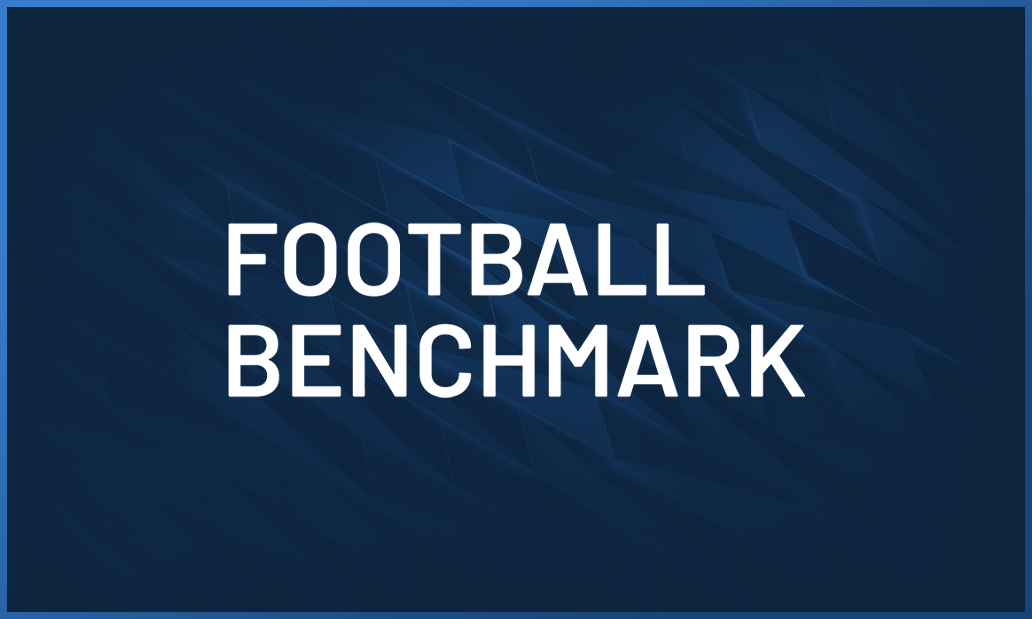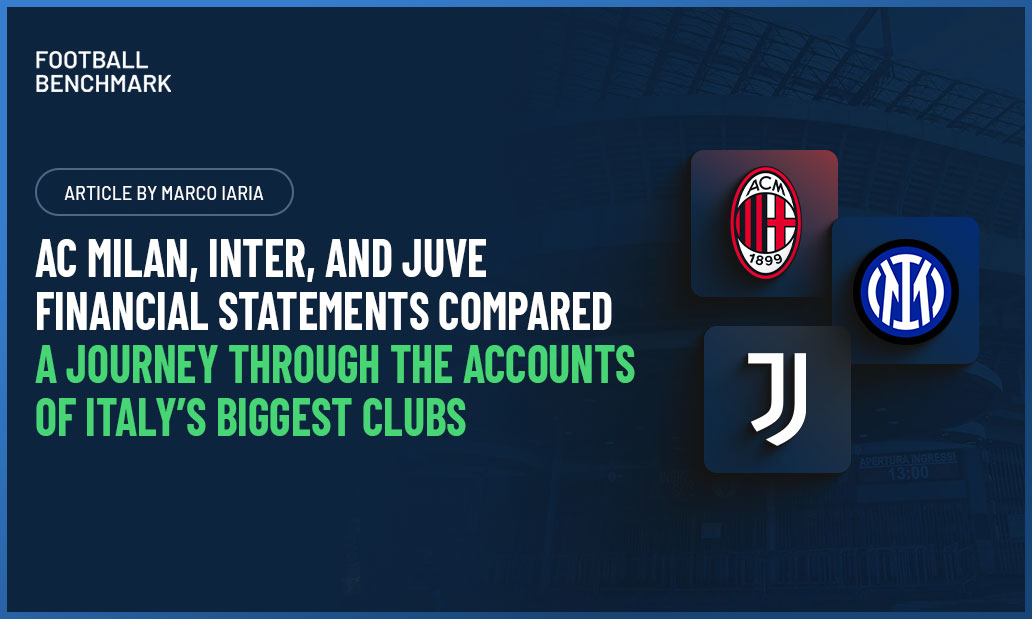
In this article, the Football Benchmark team analyses the new UEFA Financial and Sustainability Regulations, that will replace and enhance the Financial Fair Play system. Considering that such updated regulations – some of them to enter into force after a cushion period – are significantly stricter than earlier requirements, it is essential that European clubs understand the key requisites of the new framework, how the new regulations are going to impact their financial planning, as well as the more stringent equity requirements to be in compliance with the new UEFA regulations. This to take advantage of such gradual implementation and promptly adapt their business models.
In 2011, for the first time, UEFA has issued rules regarding clubs' operations outside the playing field: in addition to obtaining the right to participate in international competitions by achieving sporting results in their own domestic leagues, clubs had to meet certain governance, economic and financial parameters. The main goals of the so-called Financial Fair Play were to improve the economic and financial performance of European clubs and to protect their sustainability in the medium to long term.
Since then, the overall financial performance of European football has improved significantly: overdue payables have been almost wiped out and the aggregate bottom-line result of the European top divisions clubs moved from a net loss of EUR 1.7 billion in 2010/11 to a net profit of EUR 579m in 2016/17 (EUR 140m in 2017/18). However, the COVID-19 outbreak completely changed the European football landscape: dramatic operating revenue losses accumulated, while the mostly fixed staff costs remained at previous levels. By consequence, the first two seasons impacted by the pandemic showed a dramatic worsening of the financial performance of European football, with estimated aggregate net loss above EUR 6 billion in two seasons. However, the previous achievements of the UEFA Financial Fair Play have likely avoided an even more serious, and probably irremediable, financial distress.
As a response to the negative impact of the global pandemic on clubs’ accounts, UEFA has already adopted temporary emergency measures, such as considering 2020 and 2021 financial years as a single period, when evaluating clubs’ off-pitch performances.
However, the pandemic represented the perfect catalyst for a more consistent reform, required by the fast evolution of the football industry over the past ten years. Indeed, in April 2022 the UEFA Executive Committee approved the new Club Licensing and Financial Sustainability regulations, which will come into force in the 2022/23 season, through a gradual implementation process of three years, allowing clubs to adapt.
Beside some minor amendments in the general Club Licensing system, mainly regarding youth teams, women’s football, social responsibility, and the introduction of a new “net equity rule” (net equity position should be positive or improved by at least 10% year on year), the most significant change in the new regulations is the establishment of three distinct key pillars in the club monitoring requirements:
- Solvency
- Stability
- Cost control
The previous Financial Fair Play System was based on two key parameters to be met by the clubs: the absence of overdue payables and the break-even rule. Both have been reinforced in the new regulations through the solvency and stability pillars, respectively. The third pillar, the cost control requirement, represents the biggest innovation in the form of the squad cost ratio – it is a response to the key recent trends in the football industry: increasing player wages, agents and transfers’ costs potentially threatening clubs’ sustainability in the long-term.
Starting from the solvency pillar, the new “no overdue payables” rule will ensure enhanced protection to club’s creditors, as controls will be performed quarterly, in contrast to the current two assessments per year. Payables due by 30 June, 30 September and 31 December during the license season must be settled by 15 July, 15 October and 15 January respectively, namely clubs will have 15 days to settle overdue amounts. Moreover, there will be less tolerance towards late payers, as payments overdue for more than 90 days will be considered an aggravating factor.
Payables are to be intended towards other football clubs, social/tax authorities, all employees and to UEFA, the licensor or additional entities designated by them.
The first pillar must be fulfilled by all clubs admitted to the relevant competitions - UEFA Champions League, the UEFA Europa League or the UEFA Europa Conference League - even in the qualification phases.
The stability requirement will be guaranteed by the new football earnings rule, an evolution of the existing break-even rule. Similarly to the previous regulation, UEFA will look at the difference between relevant income and relevant costs of clubs in a 3-year monitoring period. The resulting football earnings (surplus or deficit) can be then improved in consideration of potential relevant investments by the club for the long-term benefit of football (e.g. youth development, community development, women’s football, etc.). Furthermore, in order to reduce clubs’ debt, UEFA has specified that relevant investments, that can be used to improve clubs’ football earnings parameter, must now be covered with existing equity or new capital contributions.
One of the most relevant changes compared to the current scenario is the increase of the acceptable deviation over three years from EUR 30m to EUR 60m, keeping unchanged that this loss should be entirely covered by either contributions or equity. Moreover, the acceptable deviation can be further increased by a maximum of EUR 10m per each reporting period for particularly virtuous clubs – those who are not subject to other disciplinary measures or to a settlement agreement and are compliant with some financial health indicators (positive equity, quick ratio equal to or above 1, sustainable debt and going concern).
Finally, the new regulations specify that all clubs’ transactions should be considered at fair value for the purposes of the calculation of the football earnings rule. In particular, in case of suspicion by the Club Financial Control Body (CFCB) on the value of a commercial deal struck by a club, a fair value assessment can be commissioned to an independent third-party. In addition to that, if the CFCB has doubts on the value accounted for in relation to players transaction, it can request the licensee to adjust the proceeds resulting from the disposal of a player’s registration (for the calculation of the profit on disposal of the player’s registration) by considering the proceeds to be the lower of the actual transaction proceeds on disposal and the net book value in respect of the costs of the player’s registration in the licensee’s financial statements.
The second pillar should be met by all clubs participating in the relevant competitions with total employee benefit expenses above EUR 5m in the two reporting periods before the start of the UEFA competition.
The third pillar, focused on cost control, includes the most important addition of these new regulations: UEFA will evaluate the squad cost ratio, namely a ratio between total costs associated to the squad and clubs’ total income considered.
Diving into more details, we summarize the key definitions of the items included in the formula:
- Employee benefit expenses in respect of relevant persons: Total staff costs referring to relevant persons: gross wages, non-monetary benefits, signing-on, loyalty payments, bonuses, post-employment benefits, termination benefits, image rights payments, social security charges and any other forms of consideration (e.g. cryptocurrencies, fan tokens and NFT).
- Amortisation/impairment of relevant persons’ costs: Players are usually accounted for as intangible assets, subject to annual amortisation (based on their contract length) and potential impairment.
- Costs of agents, intermediaries and connected parties: Any fees, commissions or bonuses paid to agents, intermediaries and connected parties, not otherwise included in the employee benefit expenses of relevant persons and the amortisation/impairment of relevant persons’ costs.
- Adjusted operating revenue: Total operating revenues: matchday, broadcasting, UEFA prize money, commercial and other operating income (excluding income from non-football operations and extraordinary income). Amounts should be eventually decreased if any of the elements include income transactions above fair value.
- Net profit/loss on disposal of relevant persons’ registrations and other transfer income/costs: Net profit or loss on disposal of relevant persons’ registrations: difference between the received transfer fee and the player’s carrying amount at the moment of the disposal. Other transfer income/expenses mainly refer to players' loans. Amounts should be eventually decreased in case of doubts on the transactions' fair value. This item is calculated as the average of the previous three years' figures.
This new ratio represents an evolution of an indicator already included in the previous UEFA Financial Fair Play regulations: a recommendation to keep total employee benefit expenses below 70% of total revenue. The main change is that the new ratio is now a strict requirement – a pillar - and not only a recommendation. Moreover, there are some changes also in the calculation of the ratio, that now also encompasses a wider number of items: in the numerator, employee benefit expenses refer now only to relevant persons, while amortisation of players’ registrations and agents’ fees are introduced; in the denominator, in addition to operating revenues, also the average 3-year net profit on disposal of players is considered. The squad cost ratio aims at grasping the full operations of clubs, also in view of the increasing prominence of cost items such as agents’ fees and relevant revenue sources such as transactions with players. In this last instance, the CFCB will have an important yet challenging role in monitoring and eventually adjusting downward the transactions occurring above fair value, possibly undertaken with the sole goal of balancing the books in order to comply with the set requirements.
The cost control requirements apply to all clubs who qualify for the group stages of the relevant competitions, except for those clubs that have total employee benefit expenses below EUR 30 million.
The threshold for this new parameter has been set at 70%, starting in the 2025/26 season - clubs will have an adequate gradual transitional period to adapt. Precisely, in the 2022/23 season no cost control requirement will be applied, while in 2023/24 and 2024/25 the threshold will be equal to 90% and 80%, respectively.
The gradual implementation to be undertaken by UEFA is justified by the pluriannual nature of players’ contract, as well as the devastating impact of the COVID health crisis on football clubs’ financials. In order to showcase how clubs would comply with the new requirement, we have analyzed a number of top clubs’ performance in relation to the squad cost ratio in the latest full season before the pandemic (2018/19) and the latest season entirely impacted by the health crisis for which financial figures are available (2020/21).
For the purposes of such analysis, we have looked at 20 European top clubs – precisely, the top 20 clubs by Enterprise Value (EV) according to Football Benchmark’s latest report, the “Football Clubs' Valuation: the European Elite 2022”. In order to complete our exercise, we relied on publicly available information (e.g.: club’s official financial statements and leagues’ reports), and we undertook estimations for some items included in the squad cost ratio that were not available. In particular, we have made assumptions on the average share of the relevant persons out of the total staff costs, and we have only considered the capitalised agents’ fees, as already included in the annual amortisation of players’ registrations.
The charts below show the final outcomes of our analysis:
In the latest season before COVID-19, out of the top 20 clubs considered, 12 clubs would have been compliant with the 70% threshold of the squad cost ratio. The average ratio registered in the sample would have been 69%, with Tottenham Hotspur FC (42%) and AC Milan (108%) being the best and the worst performers, respectively. In absolute terms, Chelsea FC showed the highest delta: EUR 92m above the set threshold. However, considering the 90% threshold announced for 2023/24, only AC Milan would have been above the limit, while West Ham United FC, Chelsea FC and Leicester City FC would also be above the 80% threshold.
Unsurprisingly, the overall situation in the 20-club sample has dramatically worsened in the 2020/21 season: the average squad cost ratio grew to 86%. The main reasons behind this poor performance are the almost entirely lost matchday revenues, not counterbalanced by a proportional decrease in squad costs, and the depressed transfer market. Only two clubs, FC Bayern München (63%) and Real Madrid CF (68%), would have been compliant with the 70% threshold. Looking at the least stringent threshold of 90%, seven clubs included in the sample would have been non-compliant. The worst performers would have been FC Barcelona (120%), FC Internazionale Milano (104%) and SSC Napoli (100%).
The reopening of stadia, already started in the 2021/22 seasons, and the overall positive outlook that we have witnessed in relation to the pandemic in the recent months will surely help clubs to increase their revenues and partially improve the above results. Considering the gradual transitional period announced by UEFA, clubs will have time to adapt, focusing on both the numerator and the denominator of the formula: revenue increase and cost savings.
In case of non-compliance with the club monitoring requirements, the new regulations foresee different sanctions for the three pillars. In case of failure to fulfil the solvency requirement, with payables overdue by more than 90 days, the club could be excluded from future competitions. Violation of the stability requirement could lead to a settlement agreement between the CFCB and the club. Finally, non-compliance with the squad-cost-ratio threshold will be subject to a financial disciplinary measure proportional to the extent to which the club’s squad cost ratio is in excess of the defined limit and the number of breaches of the club over the current and the previous three seasons. In this last instance, UEFA has tried to provide a more direct infringement-sanction relation, which adds clarity to what clubs can expect in case of a breach.
In case of breaches of one or more of the requirements, the CFCB will take the final decision on the sanction to apply, taking into account also other factors, such as: quantum and trend of non-compliance, presence of a football earning surplus, significant impact of conversion of accounts from local reporting currency into euros, short-term forecast and long-term business plan, debt situation, force majeure, major and unforeseen changes in the economic environment and operations located in a structurally inefficient market.
Andrea Sartori, Founder and CEO of Football Benchmark concludes: “What is still to be seen is whether the introduction of these new regulations, which will most likely lead to enhanced financial discipline, will further crystallize sporting performance and results at the top of the football pyramid, a collateral effect already seen following the introduction of the Financial Fair Play regulations a decade ago. Obtaining simultaneously clubs’ long-term financial sustainability and a sufficiently high level of competitiveness of national and international competitions, is an absolute must for rightsholders. This in order to ensure the long-standing interest of fans, distracted and attracted more and more in the digital era by a variety of alternative entertainment options”.




